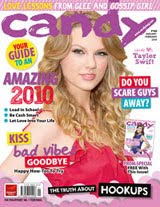The 1940s and 1950s Cable television originated in the United States almost simultaneously in Arkansas, Oregon and Pennsylvania in 1948 to enhance poor reception of over-the-air television signals in mountainous or geographically remote areas. “Community antennas” were erected on mountain tops or other high points, and homes were connected to the antenna towers to receive the broadcast signals. By 1952, 70 “cable” systems served 14,000 subscribers nationwide. In the late 1950s, cable operators began to take advantage of their ability to pick up broadcast signals from hundreds of miles away. Access to these "distant signals" began to change the focus of cable’s role from one of transmitting local broadcast signals to one of providing new programming choices. The 1960s By 1962, almost 800 cable systems serving 850,000 subscribers were in business. Well-known corporate names like Westinghouse, TelePrompTer and Cox began investing in the business, complementing the efforts of early entrepreneurs like Bill Daniels, Martin Malarkey and Jack Kent Cooke. The growth of cable through the importation of distant signals was viewed as competition by local television stations. Responding to broadcast industry concerns, the Federal Communications Commission (FCC) expanded its jurisdiction and placed restrictions on the ability of cable systems to import distant television signals. As a result of these restrictions, there was a “freeze” effect on the development of cable systems in major markets, lasting into the early ‘70s (see below). The 1970s In the early 1970s, the FCC continued its restrictive policies by enacting regulations that limited the ability of cable operators to offer movies, sporting events, and syndicated programming. The freeze on cable’s development lasted until 1972, when a policy of gradual cable deregulation led to, among other things, modified restrictions on the importation of distant signals. The clamp on growth had adverse financial effects, especially on access to capital. Money for cable growth and expansion all but dried up for several years. However, concerted industry efforts at the federal, state, and local levels resulted in the continued lessening of restrictions on cable throughout the decade. These changes, coupled with cable’s pioneering of satellite communications technology, led to a pronounced growth of services to consumers and a substantial increase in cable subscribers. In 1972, Charles Dolan and Gerald Levin of Sterling Manhattan Cable launched the nation’s first pay-TV network, Home Box Office (HBO). This venture led to the creation of a national satellite distribution system that used a newly approved domestic satellite transmission. Satellites changed the business dramatically, paving the way for the explosive growth of program networks. The second service to use the satellite was a local television station in Atlanta that broadcast primarily sports and classic movies. The station, owned by R.E. "Ted" Turner, was distributed by satellite to cable systems nationwide, and soon became known as the first "superstation," WTBS. By the end of the decade, growth had resumed, and nearly 16 million households were cable subscribers. The 1980s The 1984 Cable Act established a more favorable regulatory framework for the industry, stimulating investment in cable plant and programming on an unprecedented level. Deregulation provided by the 1984 Act had a strong positive effect on the rapid growth of cable services. From 1984 through 1992, the industry spent more than $15 billion on the wiring of America, and billions more on program development. This was the largest private construction project since World War II. Satellite delivery, combined with the federal government’s relaxation of cable’s restrictive regulatory structure, allowed the cable industry to become a major force in providing high quality video entertainment and information to consumers. By the end of the decade, nearly 53 million households subscribed to cable, and cable program networks had increased from 28 in 1980 to 79 by 1989. Some of this growth, however, was accompanied by rising prices for consumers, incurring growing concern among policy makers. The 1990s In 1992, Congress responded to cable price increases and other market factors with legislation that once again hampered cable growth and opened heretofore “exclusive” cable programming to other competitive distribution technologies such as “wireless cable” and the emerging direct satellite broadcast (DBS) business. In spite of the effect of the 92 Act, the number of satellite networks continued their explosive growth, based largely on the alternative idea of targeting programming to a specific "niche” audience. By the end of 1995, there were 139 cable programming services available nationwide, in addition to many regional programming networks. By the spring of 1998, the number of national cable video networks had grown to 171. By that time, the average subscriber could choose from a wide selection of quality programming, with more than 57 percent of all subscribers receiving at least 54 channels, up from 47 in 1996. And at the end of the decade, approximately 7 in 10 television households, more than 65 million, had opted to subscribe to cable. Also during the latter half of the decade, cable operating companies commenced a major upgrade of their distribution networks, investing $65 billion between 1996 and 2002 to build higher capacity hybrid networks of fiber optic and coaxial cable. These “broadband” networks can provide multichannel video, two-way voice, high-speed Internet access, and high definition and advanced digital video services all on a single wire into the home. The upgrade to broadband networks enabled cable companies to introduce high-speed Internet access to customers in the mid-90s, and competitive local telephone and digital cable services later in the decade. Enactment of the Telecommunications Act of 1996 once again dramatically altered the regulatory and public policy landscape for telecommunications services, spurring new competition and greater choice for consumers. It also spurred major new investment, with America’s then-largest telecommunications colossus, AT&T, entering the business in 1998, though exiting four years later (see below). Almost simultaneously, Paul Allen, a founder of Microsoft, began acquiring his own stable of cable properties. And America On-Line moved on an historic merger with Time Warner and its cable properties, to form AOL Time Warner. A generally deregulatory environment for cable operating and programming companies enabled the cable industry to accelerate deployment of broadband services, allowing consumers in urban, suburban, and rural areas to entertain more choices in information, communications, and entertainment services. 2000 and Beyond Arrival of the new millennium brought with it hopes and plans for acceleration of advanced services over cable’s broadband networks. As the new millennium got under way, cable companies began pilot testing video services that could change the way people watch television. Among these: video on demand, subscription video on demand, and interactive TV. The industry was proceeding cautiously in these arenas, because the cost of upgrading customer-premise equipment for compatibility with these services was substantial and required new business models that were both expansive and expensive. In 2001, partly in response to those demands, AT&T agreed to fold its cable systems with those of Comcast Corp., creating the largest ever cable operator with more than 22 million customers. Lower cost digital set-top boxes that started to become the norm in customer homes in the mid 1990s proved effective in accommodating the launch of many of the new video services. In general, however, more expensive technology would still be required for cable to begin delivery of advances such as high definition television services, being slowly introduced by off-air broadcast stations as well as by cable networks such as HBO, Showtime, Discovery, and ESPN. By 2002, the cable landscape largely reflected the findings of a study sponsored by the Cable & Telecommunications Association for Marketing (CTAM). The study showed that roughly two of every three U.S. households had access to three cutting-edge communication tools: cable television, cellular phones and personal computers. Digital cable could be found in 18 percent of U.S. television homes, suggesting an overall digital cable penetration among cable customers in the range of 27 percent. As for data services, the research revealed that 20 percent of cable customers with PCs are using high-speed modems today. Cable operators with upgraded two-way plant have been witnessing dramatic growth in “broadband” data. Cable has quickly become the technology of choice for such services, outpacing rival technologies, such as digital subscriber line (DSL) service, offered by phone companies, by a margin of 2 to 1. Subscribership to high-speed Internet access service via cable modems had grown to more than 10 million by the end of the third quarter of 2002. As for telephone service using the cable conduit, growth was evident in all the limited market areas where such service was offered. More than 2 million customers were using cable for their phone connections by mid 2002. To accommodate accelerating demand, cable programmers are rapidly expanding their menu of digital cable offerings. By 2002, about 280 nationally-delivered cable networks were available, with that number growing steadily. At the end of 2002, the consumer electronics and cable industries reached a “plug-and-play” agreement that allowed “one-way” digital television sets to be connected directly to cable systems without the need for a set-top box. These new sets are marketed under the name Digital Cable Ready television sets (DCRs). A security device called a CableCARD is provided by cable operators to allow cable customers to view encrypted digital programming after it is authorized to do so by the cable operator. Talks to resolve issues related to “two-way” digital television sets began in 2003 and continue. The digital TV transition leapt forward in 2003, as substantial gains were made in the deployment of High-Definition Television (HDTV), Video-on-Demand (VOD), digital cable, and other advanced services. Competitive digital phone service gained momentum as cable introduced Voice over Internet Protocol (VoIP) telephone services. At the start of 2006, cable companies counted a total of about 5 million telephone customers, representing VoIP customers and customers for traditional circuit switched telephone service. An NCTA survey of the top 10 MSOs showed that by September 1 of 2004, 700 CableCARDs were installed. By mid-November, that number had grown to over 5,000 CableCARDs. One year later, at the end of 2005, NCTA estimated that number had reached 100,000. Results at the end of the Third Quarter of 2005 provide ample evidence of the growth potential of cable's new position as a broadband provider. Cable’s capital expenditures reached $100 billion. Cable’s high-speed Internet service ended the quarter with 24.3 million subscribers, and the number of digital cable customers had grown to 27.6 million. More on the History of Cable Television | 



 - Cable TV is also known as "
- Cable TV is also known as "





